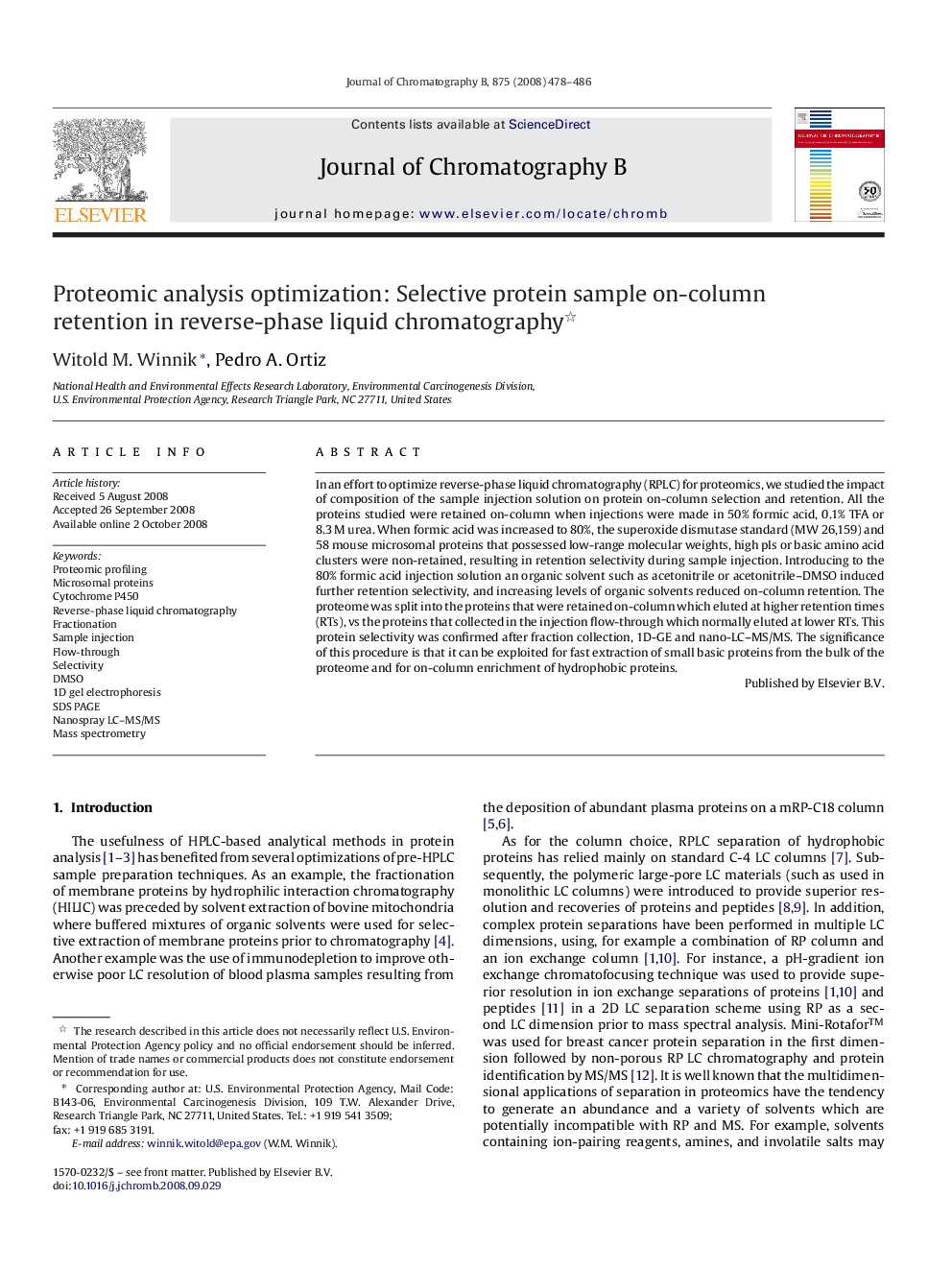| کد مقاله | کد نشریه | سال انتشار | مقاله انگلیسی | نسخه تمام متن |
|---|---|---|---|---|
| 1215165 | 966965 | 2008 | 9 صفحه PDF | دانلود رایگان |

In an effort to optimize reverse-phase liquid chromatography (RPLC) for proteomics, we studied the impact of composition of the sample injection solution on protein on-column selection and retention. All the proteins studied were retained on-column when injections were made in 50% formic acid, 0.1% TFA or 8.3 M urea. When formic acid was increased to 80%, the superoxide dismutase standard (MW 26,159) and 58 mouse microsomal proteins that possessed low-range molecular weights, high pIs or basic amino acid clusters were non-retained, resulting in retention selectivity during sample injection. Introducing to the 80% formic acid injection solution an organic solvent such as acetonitrile or acetonitrile–DMSO induced further retention selectivity, and increasing levels of organic solvents reduced on-column retention. The proteome was split into the proteins that were retained on-column which eluted at higher retention times (RTs), vs the proteins that collected in the injection flow-through which normally eluted at lower RTs. This protein selectivity was confirmed after fraction collection, 1D-GE and nano-LC–MS/MS. The significance of this procedure is that it can be exploited for fast extraction of small basic proteins from the bulk of the proteome and for on-column enrichment of hydrophobic proteins.
Journal: Journal of Chromatography B - Volume 875, Issue 2, 15 November 2008, Pages 478–486